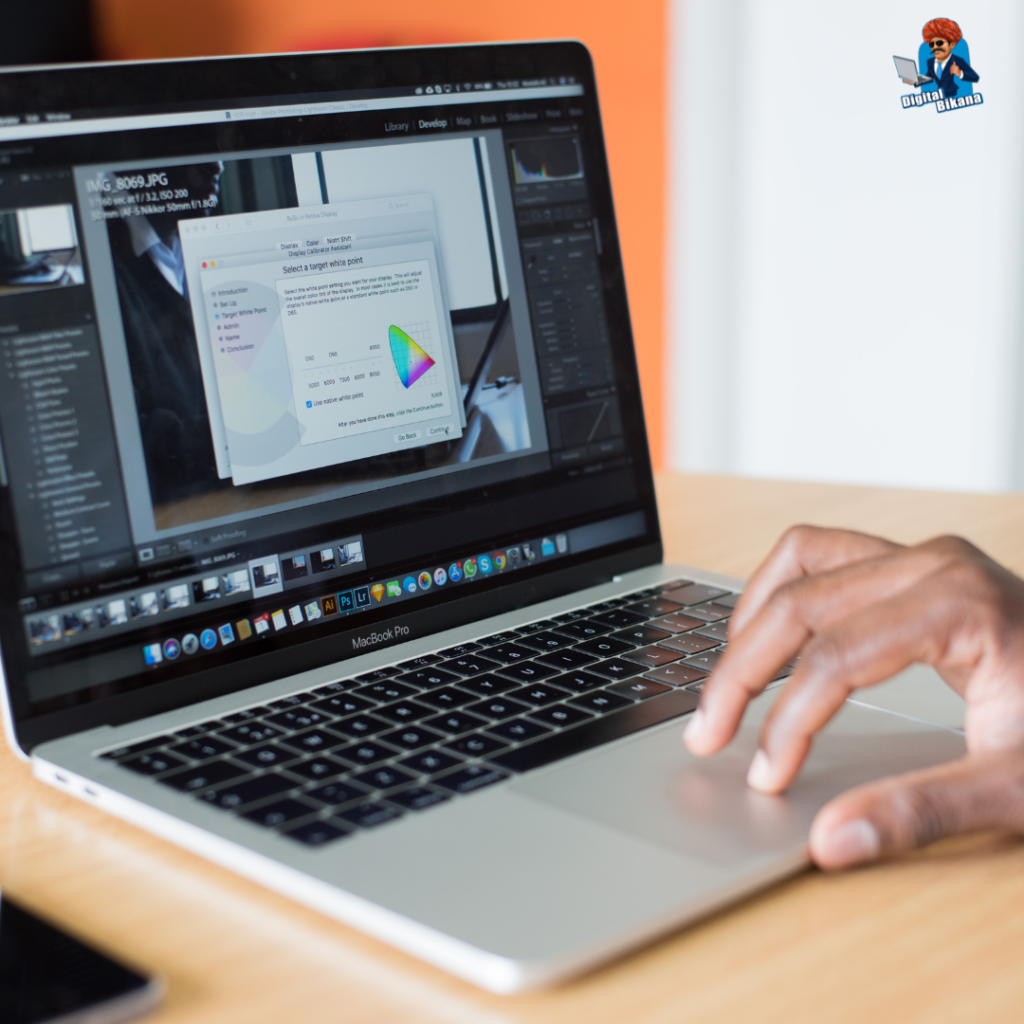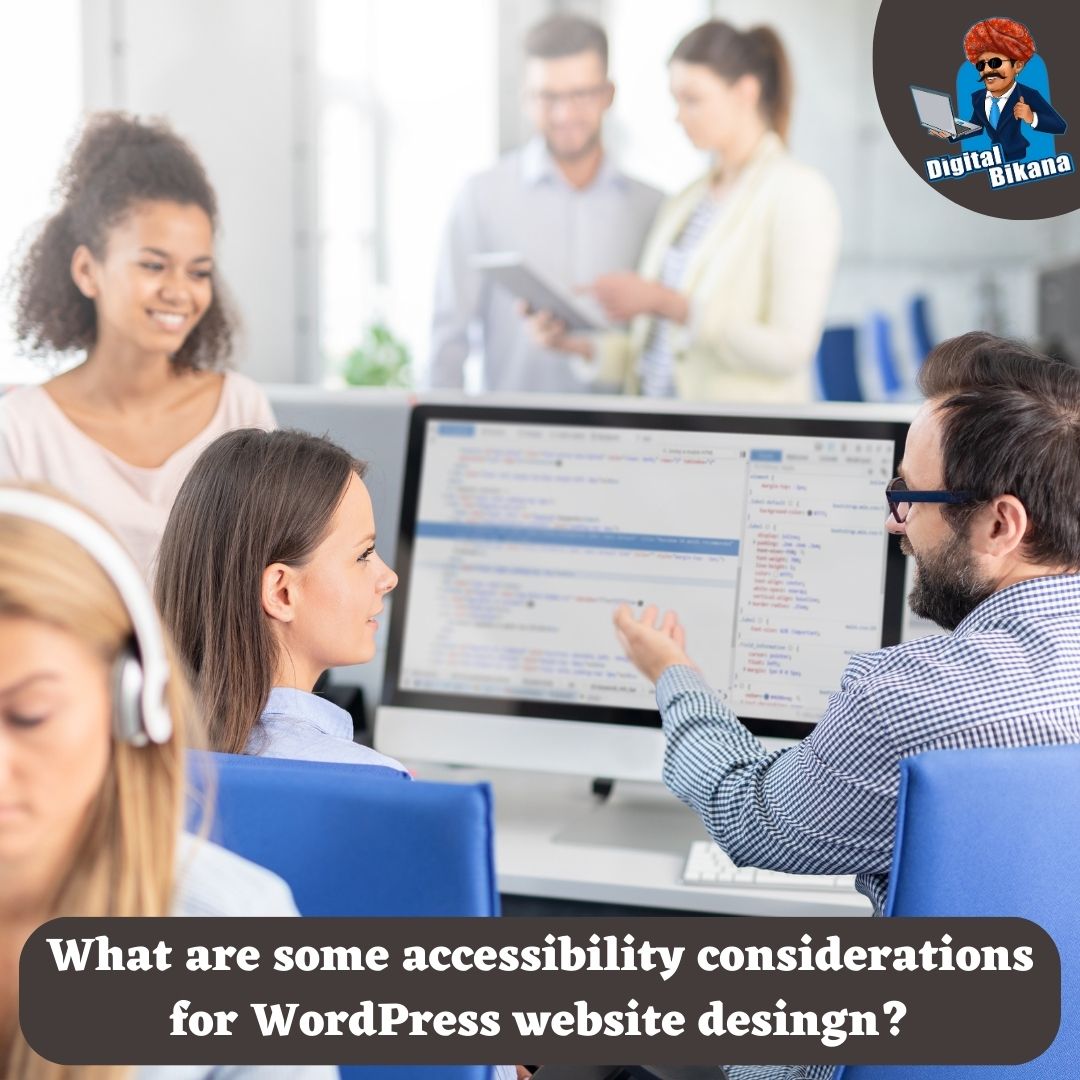What are some accessibility considerations for WordPress website design?
In this article we are going to talk about Inclusive web design that prioritizes accessibility is essential for creating websites that are usable and enjoyable for all users, regardless of their abilities or disabilities. WordPress, being a popular platform for website creation, requires careful consideration of accessibility factors during the design process.
What are some accessibility considerations for WordPress website design?
In this comprehensive guide, we will explore the importance of accessibility for WordPress website design and discuss key considerations to ensure inclusivity and compliance with accessibility standards.
1. Understanding Accessibility in Web Design
Accessibility means designing websites and digital content to ensure that people with disabilities can easily see, comprehend, navigate, and interact with them. It involves addressing barriers and providing equal access to information and functionality for all users. Accessibility is not only a legal requirement in many jurisdictions but also a moral imperative to promote inclusivity and equal opportunities online.
Read Also: What is the difference between Categories and Tags in WordPress?
2. Accessibility Guidelines and Standards
a. Web Content Accessibility Guidelines (WCAG)
WCAG offers widely accepted guidelines for creating web content that is accessible to all users. It offers recommendations and success criteria for various aspects of web design, including perceivability, operability, understandability, and robustness.
b. WordPress Accessibility Standards
The WordPress community follows the Web Accessibility Initiative’s (WAI) guidelines and actively works towards ensuring accessibility in core features and themes. WordPress Accessibility Coding Standards provide specific recommendations for developers to follow.
3. Key Accessibility Considerations for WordPress Website Design
Color Contrast: Make sure the text and background colors have enough contrast to make reading easier. Use tools to check color contrast ratios and select color combinations that meet WCAG standards.
a. Typography
Choose legible fonts and font sizes to ensure easy reading. Avoid using small font sizes, complex or decorative fonts, and excessive use of italics or all caps.
b. Alternative Text (Alt Text)
Provide descriptive alt text for images, allowing screen readers to convey the information to users who are visually impaired. Use alt text that accurately describes the purpose or content of the image.
c. Keyboard Navigation
Ensure that all website functionality is accessible via keyboard navigation. Users should be able to navigate through interactive elements, links, and forms using the Tab key. Focus indicators should be clearly visible.
d. Headings and Structured Content
Use proper heading tags (H1, H2, etc.) to structure your content. Headings help users navigate through the page easily, especially when using screen readers. Maintain a logical hierarchy and avoid skipping heading levels.
e. Forms and Input Fields
Make sure form fields are clearly labeled, indicating their purpose or expected input. Provide clear error messages and instructions for filling out forms correctly.
Read Also: How can you add a blog section to a WordPress website?
f. Multimedia Accessibility
Provide captions or transcripts for videos and audio content to make them accessible to users with hearing impairments. Ensure that videos can be paused, muted, or controlled using accessible player controls.
g. Links and Navigation
Use descriptive anchor text for links, avoiding generic phrases like “click here.” Clear navigation menus and consistent site structure aid users in finding content efficiently.
h. Readability and Readability Tools
Optimize the readability of your content by using short paragraphs, bullet points, and subheadings. Allow users to adjust font sizes and provide a high contrast mode or theme options.

4. Plugins and Tools for Accessibility
WordPress offers a range of accessibility-focused plugins and tools that can assist in improving accessibility. Popular options include:
a. WP Accessibility
This plugin adds accessibility features to your WordPress website, such as skip-to-content links, keyboard navigation enhancements, and more.
b. Accessibility Widget
This widget allows users to adjust font sizes, contrast, and color schemes, enhancing the overall accessibility of the website.
c. Accessibility Checker
This tool scans your website for potential accessibility issues and provides recommendations for improvement.
d. WP ADA Compliance Check Basic
This plugin scans your website for accessibility errors and provides reports on non-compliant elements.
You can also checkout this website designing institute to learn digital marketing course by enrolling in our course Or Contact Digital Bikana on +91-8949483728
5. Testing and Ongoing Maintenance
Regularly test your WordPress website for accessibility using tools like the WAVE Web Accessibility Evaluation Tool or the axe browser extension. Get feedback from individuals with disabilities through user testing to gather valuable insights. Make necessary adjustments and improvements based on test results. Additionally, stay updated with accessibility standards, guidelines, and best practices to ensure ongoing compliance and inclusivity.

Conclusion
Designing an accessible WordPress website is crucial for ensuring equal access to information and services for all users. By following accessibility guidelines, considering key factors such as color contrast, typography, keyboard navigation, alt text, and structured content, you can create a website that is usable and inclusive for individuals with disabilities. Leveraging accessibility-focused plugins and conducting regular testing and maintenance helps maintain compliance and improve the overall user experience. By prioritizing accessibility, you contribute to a more inclusive web environment and provide a positive user experience for all visitors to your WordPress website. So, Now I hope you have understood about some accessibility considerations for WordPress website design.

